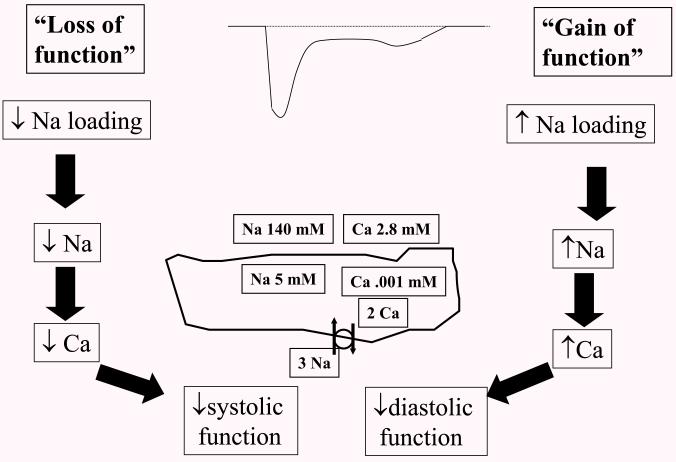Figure 3.
The role of late INa in contractility – Sodium calcium exchange (pictured as the circle with two arrows on the diagram of the cell at center) uses the energy stored in the sodium gradient to drive calcium out of the cell against its gradient, and thus balance the calcium that enters the cell through calcium channels during each AP. With a “loss of function”, internal Na will decrease, increasing the Na gradient and driving force for Ca extrusion through Na-Ca exchange, with a subsequent decrease in systolic function. On the other hand, increased late INa or “gain of function) will increase Na, decreased the driving force for Ca extrusion and cause increased internal Ca and subsequent effects on diastolic relaxation.

